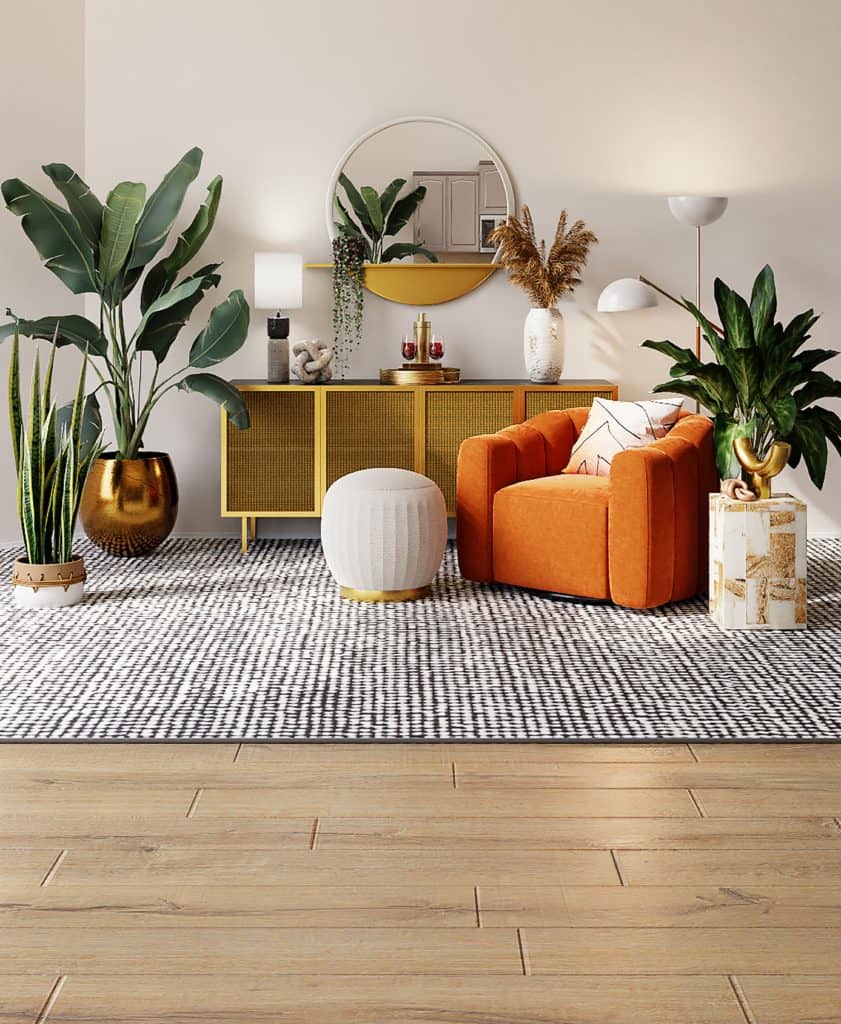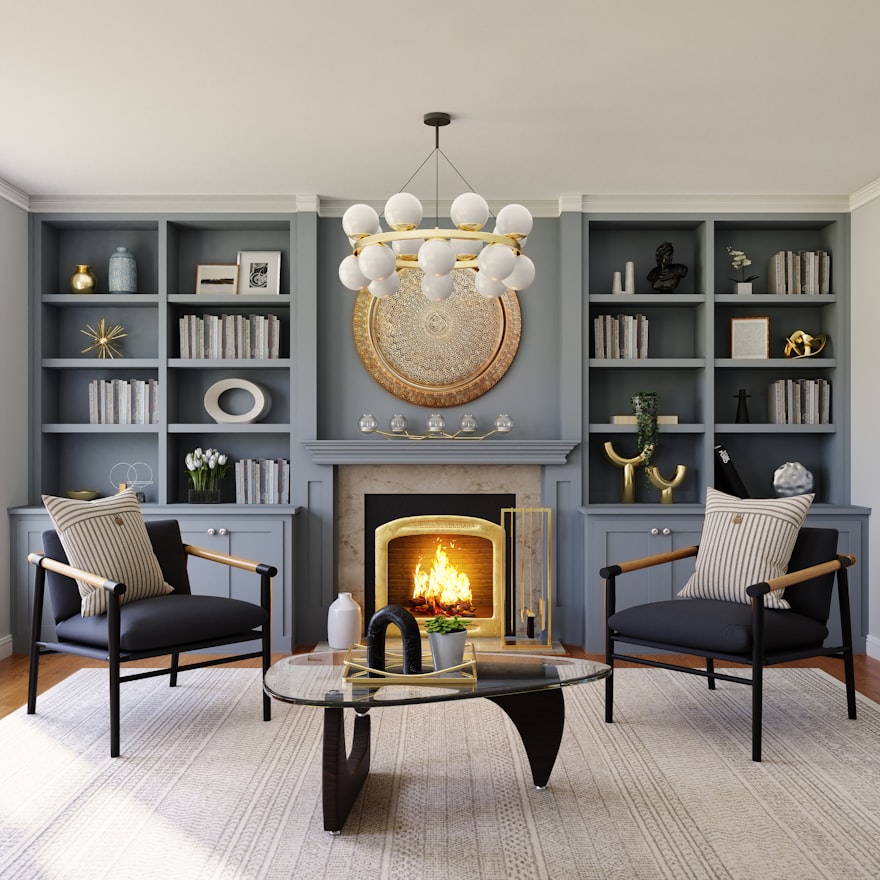What are the principles of interior design and how are they helpful when decorating?
The fundamental principles of interior design are key to designing any space big or small. They act as a sort of guideline to help you pull your decorating style together visually. Today we’re teaching you why these principles are important to keep in mind when beginning your interior decorating journey in your own home.
As you are trying to figure out how to go about decorating your small apartment or living space, you may find yourself hitting a roadblock. It can be challenging to visualize how exactly you should go about organizing your space in a way that not only is livable, but is stylish and elevated. A lot of people think that you can’t achieve the same level style and personality in a small living space. In fact, that is completely untrue.
Shop My Favorite Home Organization Accessories On Amazon!
If there is one thing that we can learn from living in a small living space, it’s that it actually will teach you everything you need to know about your interior styling. Small living spaces forces us to visualize and define spaces. It teaches us about functionality and how we experience our home. It forces us to be organized, intentional and methodical about what we bring into our home and how we use it.
As we often say on Jipse Co Studio, any space big or small can be elevated but there is a secret sauce to achieving that. And I think before you can really go any deeper into your own personal interior journey, you need to learn the basics.
Keep reading to see why we think these 6 principles of interior design are and how they can help you get started today!
This post contains Amazon affiliate links and other affiliate links. As an Amazon Associate I earn from qualifying purchases. This means that, at no additional cost to you, I will earn an affiliate commission if you click through the link and finalize a purchase.
Shop My Favorite Home Organization Accessories On Amazon!
HARMONY
Harmony by definition is the pleasing arrangement of parts and that is exactly true when it comes to interior design. By arranging visual elements in a fashion in which they repeat themselves you can create a particular style, mood, or theme. You can achieve harmony by repeating colors, textures, shapes and they all work together to deliver a specific look.
Try to think about this principle the way you would in terms of people working together in harmony. This will help you to understand that similarly, design elements can work together perfectly and that creates harmony. When you understand that basic concept, then it’s easier to visualize creating it in your small living space.

UNITY
When we talk about harmony we refer to all of the elements in a design working in unison. Unity refers to the repetition of design elements such as color, patterns, materials etc. This creates a purposeful visual design aesthetic making it harmonious as a result. While harmony gives us a sense that that different elements can fit together, unity shows us the oneness of it all. Unity tells us what the mood, theme or style is. A good example of unity is pairing two colors that compliment each other. When things or people are united, the idea is that they act together, as one. The same concept can be applied to interior design.

BALANCE
So what is balance in interior design? It’s the concept that there should be an equal distribution of visual weight in your space to allow for some sort of equalization. There are many ways to achieve this, through symmetry, asymmetry and radial balance. So how do you achieve balance in interior design? You can distribute more visual weight to one side of the space which would make the visual weight asymmetric.
You can achieve balance that centers around the space of a focal point, in which you’d achieve radial balance. Or you can just keep everything symmetrical like in the picture down below, in which there is an equal distribution of this visual weight to both sides of the space.

EMPHASIS
This is commonly understood as the focal point. It can be an item, a wall, a fixture, a painting–anything that draws the eyes and attention visually. What do you want to highlight in your space? A focal point is crucial to really centering but also breaking up the space with some focus and interest.
There are so many ways emphasis can exist in a small space. From wall color to decor, architectural details and even art; it’s ultimately about where your focus is drawn immediately. Some of the best examples we’ve seen emphasis in homes are accent walls, or a fireplace or maybe even lighting or large artwork.

CONTRAST
Another one of the key principles of interior design is contrast. This concept is all about creating tension between opposing things in a way that is visually complimentary. Contrast can help organize and pull focus to certain places in your home. It’s quite an important principle for creating and accentuating visual interest to a particular space. Contrast is immediately impactful to your interior design and quickly draws attention. However, is important to remember that it’s meant to create a sense of balance too.
With the right understanding of how this design principle works, you can truly create beautiful and interesting living spaces. Contrast can easily be achieved through colors, materials, different textures, and so on. There are a number of fun and creative ways to put this principle in practice and it’s probably one of the areas where you can get as creative as you want.

SCALE + PROPORTION
Scale and proportion in design refers to the relative sizes of objects in a space when compared to each other and how well they go together. When we think about scale we should know that it’s directly related and pertains to the visual size of an object in a space. Proportion on-the-other-hand, really refers relationship of those various objects in a space and how well they fit together.
It’s important to be conscientious of the actual dimensions of the space you want to decorate. This is because you want to use scale and proportion as it relates to your exact space. This will be helpful when deciding not only the size of furniture but also the shapes of things. For instance choosing a large coffee table when you have a small sofa can look a bit odd. But if you choose a coffee table that compliments your sofa in both shape and size then you instantly elevate the space.
The same is true for all home furnishings be it rugs, lighting, wall art, etc. Always be mindful of these things so you can make the most out of your small space.

